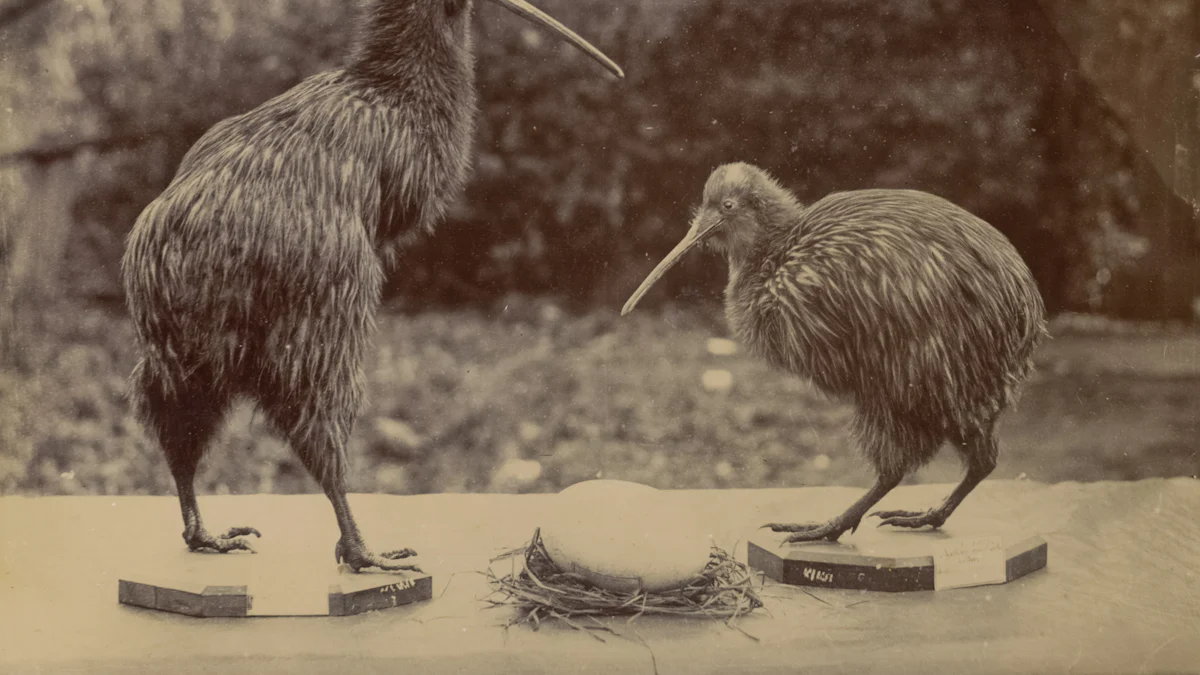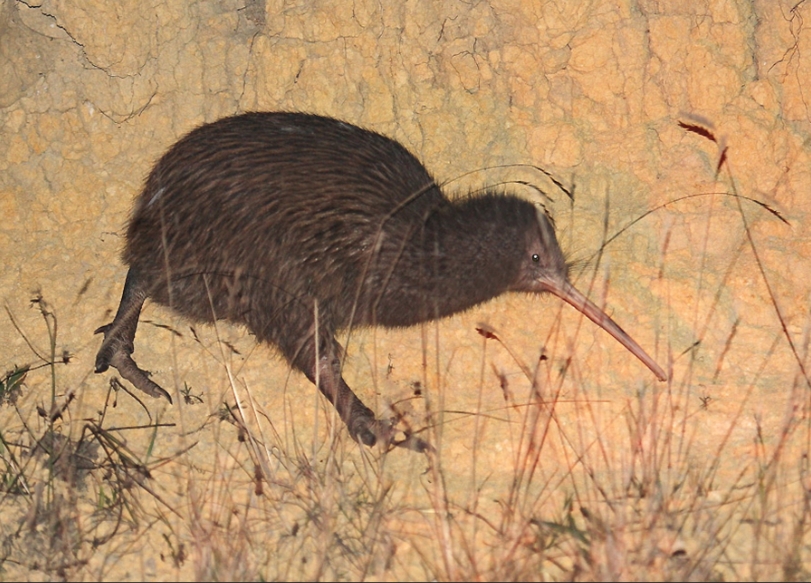
The kiwi bird, a symbol of New Zealand, captivates you with its unique characteristics. This flightless bird, known for its nocturnal habits, plays a vital role in its ecosystem. One of the most intriguing aspects is the kiwi bird scream. This distinctive call echoes through the night, marking territory and attracting mates. Recent surveys show a 50% increase in sites where kiwi calls are heard, highlighting successful conservation efforts. Understanding these vocalizations not only enriches your knowledge but also emphasizes the importance of protecting this remarkable species.
The Kiwi Bird and Its Habitat

Overview of the Kiwi Bird
Physical Characteristics
You might find the kiwi bird fascinating due to its unique features. This flightless bird has a long beak and small wings, making it distinct from other birds. Its feathers resemble fur, providing camouflage in the forest. The kiwi's nostrils are at the tip of its beak, enhancing its sense of smell.
Nocturnal Behavior
Kiwis are night creatures. They emerge after sunset to forage for insects and worms. Their keen sense of smell guides them in the dark. You can often hear their calls echoing through the night, marking their territory and communicating with mates.
Natural Habitat
Geographic Distribution
Kiwis are native to New Zealand. You will find them across various islands, each species adapted to its specific region. The North Island brown kiwi is one of the most widespread, with conservation efforts boosting its numbers by approximately 7,000 birds.
Environmental Preferences
Kiwis thrive in diverse environments. They prefer dense forests, where they can hide from predators. However, habitat loss poses a threat. Exotic forests and land clearing disrupt their homes, leading to increased competition and territorial disputes. Conservation initiatives aim to protect these vital habitats, ensuring the kiwi's survival.
The Unique Scream of the Kiwi Bird

The kiwi bird scream is a fascinating aspect of this unique species. You might find it intriguing how these calls serve as a vital communication tool in the kiwi's nocturnal world. Let's delve into the characteristics and timing of these distinctive vocalizations.
Characteristics of the Kiwi Bird Scream
Description of the Call
The kiwi bird scream is unlike any other bird call you might have heard. It is high-pitched and piercing, echoing through the night. This call serves multiple purposes, such as marking territory and attracting mates. The sound can be described as a series of repetitive notes, creating an eerie yet captivating melody. Some people even compare it to the roar of a mini T-Rex, highlighting its unique and somewhat prehistoric quality.
Differences Between Male and Female Calls
Male and female kiwi birds produce different screams. The male's call is shrill and repetitive, consisting of 8 to 25 notes. It is characterized by a loud, upward slurred note that can be repeated up to 20 times. In contrast, the female kiwi bird scream is more guttural, with a lower, rasping cry. Females typically produce 10 to 20 notes, often interrupting the male's call. This vocal interaction between males and females creates a unique soundscape in the kiwi's habitat.
Best Times to Hear Kiwi Bird Scream
Seasonal Variations
You might wonder when is the best time to hear the kiwi bird scream. Seasonal variations play a significant role in the frequency and intensity of these calls. During the breeding season, which occurs from June to March, you are more likely to hear the kiwi bird scream. This period sees an increase in vocal activity as kiwis communicate more frequently to establish territories and attract mates.
Time of Day Considerations
The kiwi bird scream is most prominent at night. Kiwis are nocturnal creatures, and their calls are primarily used for communication during the dark hours. You will find that the best time to hear these screams is shortly after sunset and before sunrise. This is when kiwis are most active, foraging for food and interacting with each other. Listening to the kiwi bird scream during these times offers a unique glimpse into their nocturnal world.
Understanding the kiwi bird scream not only enriches your knowledge of this remarkable species but also highlights the importance of conservation efforts. By recognizing these vocalizations, you contribute to the ongoing efforts to protect and preserve the kiwi population.
Challenges Faced by the Kiwi Population
The kiwi bird, with its distinctive kiwi bird scream, faces numerous challenges that threaten its survival. Understanding these threats and the efforts to combat them is crucial for preserving this iconic species.
Threats to Survival
Predation
You might be surprised to learn that introduced predators pose a significant threat to kiwi birds. Animals like stoats, dogs, and cats prey on kiwi chicks and eggs. These predators have drastically reduced kiwi populations over the years. Without natural defenses, kiwi birds rely on conservation efforts to protect them from these dangers.
Habitat Loss
Habitat loss presents another major challenge for kiwi birds. Human activities, such as deforestation and land development, destroy the dense forests that kiwis call home. This loss of habitat forces kiwis into smaller areas, increasing competition for resources. As their natural environment shrinks, the kiwi bird scream becomes less frequent, signaling a decline in their numbers.
Conservation Efforts
Role of Local Communities
Local communities play a vital role in kiwi conservation. You can find community-led initiatives that focus on predator control and habitat restoration. These efforts have proven successful in increasing kiwi populations. For example, the North Island brown kiwi population has grown by approximately 7,000 birds due to such initiatives. Community involvement ensures that conservation measures are sustainable and effective.
Government and NGO Initiatives
Government and non-governmental organizations (NGOs) also contribute significantly to kiwi conservation. They implement programs that focus on protecting kiwi habitats and controlling predator populations. These organizations work tirelessly to ensure the survival of kiwi birds. Their efforts have led to a noticeable increase in sites where the kiwi bird scream is heard, indicating successful conservation outcomes.
By understanding the challenges faced by the kiwi population and the efforts to overcome them, you can appreciate the importance of preserving this unique species. The kiwi bird scream, a symbol of New Zealand's natural heritage, serves as a reminder of the need for continued conservation efforts.
Understanding the kiwi bird scream enriches your appreciation of this unique species. These vocalizations are not just sounds; they are vital for communication and survival. Conservation efforts have shown promising results, with initiatives like Operation Nest Egg increasing chick survival rates. You play a crucial role in these efforts. By supporting local projects and reporting injured birds, you contribute to the kiwi's future. The kiwi bird scream symbolizes the resilience and beauty of New Zealand's wildlife. Your engagement ensures that this iconic sound continues to echo through the night.
If you’re passionate about birds and want to learn more, we invite you to explore our blog list! Dive into a variety of topics that cover everything from birdwatching tips and species profiles to conservation efforts and fascinating bird behaviors. Whether you’re a seasoned birdwatcher or just starting, our articles are designed to inspire and inform.












